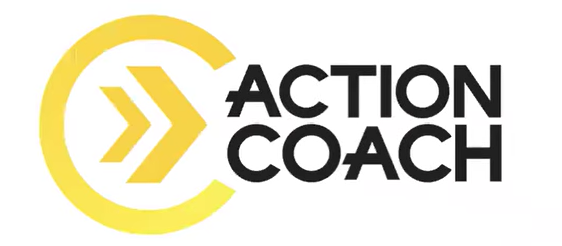YOU DON’T RISE TO THE LEVEL OF YOUR GOALS —YOU FALL TO THE LEVEL OF YOUR PLAN
Susan Thomson • June 25, 2025
Planning is a vital opportunity to step out of the whirlwind for a day and work ON your business.
Intuitively you know that this is important and that it will help your team move faster and be more successful. While you’re in the whirlwind it seems hard to justify the time – there is, after all, a whirlwind that consumes you.
The Top 3 Reasons to Do a Plan, and 3 Keys to Get You Off To a Fast Start:
- Planning gives your people a roadmap – the fastest path to success. Have your people ever told you they are overwhelmed with trying to get everything done – they feel like they need more tools, resources and staff to get the work done. What you see is that their efforts aren’t moving the needle on growing or getting your company to the next level.
It’s not that your team is lazy or doesn’t care – they just don’t have the roadmap. It’s kind of like when you put your destination into Siri and expect to get the fastest path to your destination, That’s what a plan gives your team. So instead of driving through pastures and around cornfields, they’ll get on the super highway. They work on the right things in the right order. - Planning de-mystifies your situation. When things aren’t going like you want them to, you tend to “dive deep” and analyze what might be going wrong, and in the process, over-complicate everything about your company. Having a roadmap and plan, starting with the numbers that drive your business, de-mystifies it. You’ll see what’s happening very quickly and be able to either build on a small success or course-correct.
- A clear roadmap lets you talk about your company with your trusted network and prospects. Ever try to talk with someone about your company and stumble? You only get one chance to get people’s attention and get them interested enough to take a next step. Don’t waste this opportunity – you’ve worked hard to get on their radar in the first place! Your plan – your roadmap – lets you talk with your network and prospects with clarity and confidence. They’ll understand where you’re headed, why it’s important to them, and be ready to take the next step with you.
Three Keys to get off to a fast start:
- Decide on your time horizon – we do 5 years, 12 months and 90 days.
This might sound silly, but you’d be surprised at how common it is that people co-mingle and try to handle high-level strategy in your 90 day plan. A good rule of thumb:
5 Year Plans (ie. Strategic or Succession) – look at industry and tech trends, what’s happening with your workforce, how valid your Unique Selling Proposition and brand promise are over time.
1-Year Plans – look at goals that are 12 months out. What are the resources required to reach this year’s goals? Are you staffed properly? What systems need to be implemented or re-implemented to reach those goals? What threats or gaps do you need to mitigate – what’s the plan for those?
90-Day (Quarterly) Plans tend to be more tactical – who does what by when, this quarter, to reach your goals? In general, you’ll have time to get one or two big goals done in a quarter – the rest of your time is consumed by the whirlwind. Use a forced matrix to help determine priority. - Let the numbers show you where your biggest opportunities are.
Your numbers are your friend – they tell you exactly where to focus your efforts first. If you’re in growth mode, do you need more leads, to get better at converting leads, or providing more higher-value services? If you’re in succession mode, how well does your team do at driving the business when you’re not there? Your 5 Point Proven BluePrint will tell you exactly what to do next. - Put it on a calendar.
Research proves that when you put something on your calendar, the odds of you doing it go up dramatically. Have a calendar just for your Quarterly Plan. Put it on the wall for all to see. Have a weekly standup meeting to review progress, mark completed tasks and celebrate wins with your team. A big, visible calendar keeps your roadmap front and center for your team.
Want to learn more? Check out your planning resources at https://www.makemoreworklesswi.com/businessplan.


Succession planning isn’t just about preparing for the future—it’s about protecting the value you’ve worked hard to build. In this conversation, Bob Wood from Sunbelt Business Advisors shares a broker’s perspective on why early planning is essential for a smooth and profitable business transition. Discover what business owners should be doing now to maximize value, reduce risk, and ensure their legacy continues long after they step away.

Women on Boards: Why It Matters By: Guest blogger: Patti Epstein, TEMPO Madison The Women on Boards Committee, formerly known as Project Reach, is a TEMPO Madison initiative aimed at increasing the number of women serving on business boards. The project provides resources for members aspiring to serve on business boards and for those responsible for filling board positions. Women on Boards: Why It Matters Research shows that gender-diverse boards are not just fair—they're smart business. Companies and communities benefit when women are meaningfully represented in boardrooms. Business Benefits Higher financial performance: Fortune 500 companies with more women directors outperform those with fewer. Stronger governance: Diverse boards are linked to better risk oversight, fewer reporting errors, and more engaged leadership. Improved ESG outcomes: Gender-diverse boards lead to stronger environmental, social, and governance performance. Enhanced reputation: Companies with women on boards are viewed more favorably by stakeholders. Better decision-making: Women leaders prioritize transparency, fairness, and stakeholder interests. Studies show that having at least three women on a board maximizes impact. Why You Should Consider Board Service Serving on a business board is a powerful way to shape strategy, drive change, and advance your professional growth. Benefits of Board Membership: Drive meaningful change. Influence decisions that affect industries, communities, and global challenges—from sustainability to equity. Expand your strategic thinking. Engage in high-level governance, risk oversight, and long-term planning that sharpen your leadership skills. Build powerful networks. Connect with accomplished peers, executives, and thought leaders across sectors. Stay ahead of the curve. Gain insider access to emerging trends, innovations, and market shifts. Amplify your voice. Represent diverse perspectives and advocate for inclusive, ethical business practices. Earn competitive compensation. Public company board members typically earn $50,000–$300,000, with additional benefits and equity in some cases. Grow personally and professionally. Learn from complex challenges, broaden your influence, and leave a lasting legacy. Before joining a board, clarify your goals—what you want to contribute and what you hope to gain. This self-awareness helps you find a board that aligns with your values, strengths, and aspirations. Recognizing that the best way to obtain a board seat is through connections, Women on Boards can facilitate introductions with individuals and entities responsible for filling corporate board seats. A key component of this effort is Women on Board's Database of Board Candidates, featuring Board Briefs and Bios of TEMPO Madison members. This database serves as a one-stop portal where businesses and recruiters can search for and find qualified candidates. If you are interested in submitting your board bio, don't hesitate to get in touch with Megan Purtell. Sources Catalyst: The Bottom Line – Corporate Performance and Women’s Representation Harvard Business Review: When and Why Diversity Improves Your Board’s Performance MIT Sloan: How Diversity Can Boost Board Effectiveness Harvard Law: A Diverse View on Board Diversity McKinsey & Company: Women in the Workplace

Even the longest-serving, most energetic and successful CEOs are going to exit the company at some point. If you serve on a Board of Directors, Succession Planning is a critical part of your responsibilities. For Boards of Directors, succession carries a different weight. Boards sit in a unique position: accountable to ownership for the company’s future, yet limited in authority to the CEO. That tension shapes the way you think about leadership transitions. The Weight of Stewardship For Boards, succession is more than a talent management process—it’s governance at its highest level. A Board must ensure there is a capable leader at the helm, today and tomorrow. A sudden change at the top can destabilize the company, your valuation and trust - with the team, your ownership and your customers. A Board must ensure the organization never faces that cliff. Authority Ends at the CEO—But Responsibility Doesn’t Boards don’t run the business. Their authority stops with hiring, evaluating, and (when necessary) replacing the CEO. Your accountability goes further though. Owners expect the Board to safeguard continuity, results, and enterprise value. That means as a Board you need to plan. How would you answer these? If the CEO stepped aside tomorrow, what’s our plan? How strong is the leadership bench below the CEO? Are we preparing the kind of leader the future will require? What does that mean for leadership style? Risk, Readiness, and Resilience Succession is fundamentally about risk management. Health issues, scandals, resignations—they rarely come with warning. The strongest Boards anticipate disruption by ensuring: A clear interim leadership plan exists. Communications are ready before they’re needed. Succession planning is not an afterthought, but part of your governance rhythm. Looking Forward, Not Just Replacing The mistake many organizations make is treating succession as a replacement exercise. But great Boards know succession is about the future. The next CEO should not simply mirror the last. Instead, Boards should be asking: What capabilities will this company need in five to ten years? Do we have the courage to appoint a leader with new skills, new perspectives, and diversity of thought? How do we balance continuity with transformation? The Effort is Ongoing The best Boards treat succession planning as part of what you do regularly, not a project. It's a standing agenda item. You view it as part of strategy, risk management, and governance—not an isolated activity. Closing Thought Succession planning gives your organization the gift of foresight. For Boards, it is less about control and more about stewardship. Owners, employees, and investors count on you to make sure the organization is never left without leadership. Done well, succession planning preserves continuity and also builds confidence, resilience, and the capacity to seize the future. Want to Dive Deeper? Check out our upcoming free webinar series: Special Session for Boards: How to Approach Succession Effectively, Monthly on the 1st Thursday @10:00AM. https://go.thryv.com/site/actioncoachdanecounty/online-scheduling?service=57zgp89swbhzzwgm

Anger at work is more common than you think — and when handled the right way, it can actually be a powerful tool for growth. In this blog, we dive deep into the root causes of workplace anger, explore healthy ways to manage your emotions, and share practical strategies to turn frustration into focus. Learn how to navigate tense situations, protect your professional relationships, and channel your energy into positive action instead of conflict.

I have a water bottle that says, “The biggest risk you can take is to do nothing.” Every time you let an employee decision slide, every time you wait on making an important purchasing decision, every time you avoid a tough conversation with a colleague… there’s a cost – and it’s higher than you think. You might think you’re playing it safe by waiting. You hope the situation might resolve itself if given enough time. You just don’t have the time and energy to deal with this right now. The problem is, the universe doesn’t work that way. There’s a huge cost to inaction – and it’s probably bigger than you think. Worst case, something that could have been dealt with early on as an issue has now become (very) personal for you both. I had a business partner who brought their spouse into the business. I knew in my gut this would be a tough dynamic, and it was. We ultimately elected to separate, and what would have been difficult and expensive became very expensive to untangle after the fact. The often-unseen cost of inaction is that you miss a big opportunity because you didn’t get to it – you left it for someone else to in and snatch out right before you. Here are some common (costly) inactions: Not dealing with a “C” or “D” employee, or Not holding your team accountable for their KPIs, or Letting an important decision slide with a business partner, or Kicking the can down the road on your strategic plan or succession plan And here’s how to break the avoidance habit: UNDERSTAND what you are avoiding and why – what’s the worst that can happen if you have that conversation? More often, we don’t have the conversation out of fear that we’ll look bad, be seen as mean, or be embarrassed publicly. Do your HOMEWORK: What’s this person’s communication style- Fast or slower paced? Honor that. Detail person or high level? Honor that in your communication, too. How are they likely to react? Put yourself in their shoes to understand how they may be feeling – no one likes to feel targeted or “caught.” Use accountability tools like the Circle of Reason (c) to collaborate on a solution. PRACTICE what you want to say. So often we stumble at the beginning and end of tougher conversations – memorize how you want to open the conversation, so you don’t have to think about what to say – you’ll just say it. Here’s an opener to get you started: “Hey Joe, there’s something we need to talk through. It’s important. I’m hoping we can get the issues out on the table so we can come up with a solution that we both feel good about.” SCHEDULE a time for the conversation so you can both be prepared. And then take a deep breath and dive in. Don’t expect perfection – make sure your heart is in the right place, and the odds are you’ll both be fine in the long term. Want to learn more? Check out your planning resources at MakeMoreWorkLess . As clients of The Benefit Works, you get significant discounts! Susan Thomson, CEO and Licensed Coach, ActionCOACH Business & Executive Coaching Proud Member of TEMPO Madison Direct: 608-441-5374 Email: mailto:susanthomson@actioncoach.com

Let’s face it — anyone can call themselves a “coach” these days. But when you’re investing serious time and money, you don’t need just any coach. You need the right coach. 1. Extensive Real-World Experience Theory alone won’t grow your business. The best coaches have been in the trenches — they’ve led teams, managed growth, and faced the same challenges you’re up against. They may not have built a business identical to yours, but the skills and lessons they’ve mastered are highly transferable. That outside perspective is often what helps you see solutions you’d miss on your own — practical advice grounded in experience, not just theory. 2. Business Acumen You Can Trust A strong coach understands how a healthy, thriving business should actually run. From financials to systems to strategy, they bring a 360° view that helps you spot blind spots and avoid costly mistakes. 3. Great Listening Skills The best coaches don’t just talk. They listen. They ask questions you hadn’t thought of, hear what’s behind your words, and help you see issues more clearly. Sometimes the breakthrough comes not from what they say — but from what they help you realize. 4. Accountability That Drives Results A good coach won’t let you drift. They’ll hold you accountable to your goals and push you beyond “good intentions.” That gentle (or not-so-gentle) nudge can be the difference between staying stuck and hitting the next level. 5. A Track Record of Results At the end of the day, results matter. Look for testimonials, case studies, and proven wins. Great coaches don’t just inspire — they help clients build measurable success. Final Thought The best business coaches combine wisdom, empathy, and accountability to help you achieve results you couldn’t reach alone. At ActionCOACH, we hold ourselves to these standards because coaching isn’t just about advice — it’s about transformation.

Business coaching is about making your business into a valuable asset that runs smoothly, with or without you. You'll Gain Clarity in Your Business A coach will help you get clear on your roadmap for your business and keep you accountable to the action steps. You'll learn how to take your time back and have a healthy work life balance. Learn new skills. A coach can help identify skills you or your team needs and suggest tools and systems to move you and your team forward. Confidence and Peace of Mind Once you have your roadmap and your coach holds you accountable you have confidence in your business, so you rest peacefully at night. Your business will be transferable. ActionCOACH Dane County had 7 business that sold in 2022-2023



